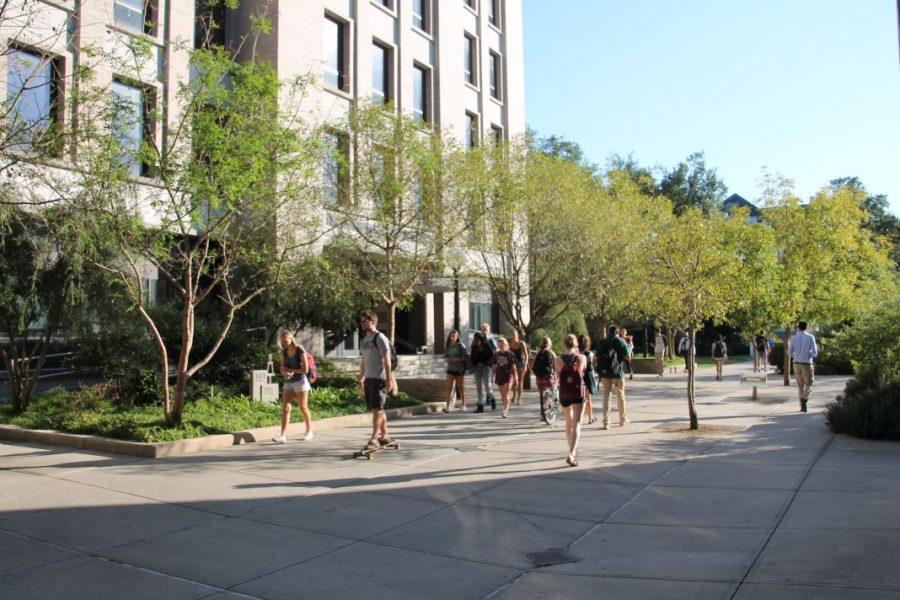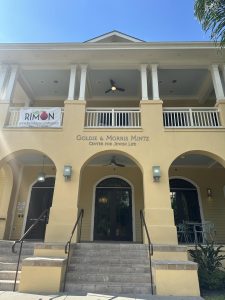The gender gap in academia: Tulane falls behind national trend
Students walk past Lindy Boggs Center for Energy and Biotechnology. Boggs houses Tulane’s engineering programs have evolved to adapt to changing technological and environmental landscapes.
October 7, 2015
It’s no secret that academia is a field dominated by men, and Tulane University is no exception.
Of all undergraduate professors at Tulane, only 36 percent are women. Despite the steadily rising percentage of women attaining faculty positions, men still outnumber women. The statistic at Tulane is also lower than the national average for female college professors, which is 42 percent, according to the American Association of University Professors.
The Hullabaloo News team conducted an independent report on the gender distribution of professor across Tulane’s academic departments. To gather the data in this article, the reporters visited the academic department websites of every major at Tulane University, excluding dual and coordinate majors, and counted the number of males and females listed as faculty members of that department. The team gathered the data this way because Tulane Workforce Management did not provide this information.
The gender gap in academia has serious consequences for female academics, according to Mimi Schippers, Tulane associate professor of gender and sexuality studies and sociology.
“Research shows that in academia more generally, not only are departments segregated by gender, but the male-dominated departments tend to draw higher wages and have more prestige,” Schippers said. “This means that women are less likely than men to have job security in academia and less likely than men [to] be promoted to full professor.”
This is an international trend, affecting many more universities than just Tulane.
The American Association of University Professors states that though fewer women go on to become full tenured professors, there are more women than men seeking advanced academic degrees. According to the AAUP, in 2009, almost 60 percent of bachelors’ degrees were earned by women and more than 50 percent of doctoral degrees were obtained by women. The Tulane undergraduate student body is 58.5 percent female, based on the official enrollment profiles for the 2014-15 academic year.
“Women are on par and ahead of men as far as degrees earned, but you don’t see that reflected in academia,” said Menaka Philips, Tulane professor of political science and director of the Gender and Sexuality Studies program.
Fewer women than men go from associate or assistant professors to tenure-track employment. The National Science Foundation reported in 2010 that women earned 41.1 percent of doctoral degrees in all science, engineering and health fields, but that they held only 34.7 percent of postdoctoral fellowships and 32.3 percent of full-time faculty positions in these fields. This low representation by women in science, technology, engineering and math academia holds true at Tulane, where only 26 percent of faculty employed by the School of Science and Engineering are women.
Philips said that the gender gap in academia leads to the absence of role models for female students.
“What does it mean to have a mentor that is a woman?” Phillips said. “Representation and visibility [are] really important.”
Infographic by Samantha Sitt
Within the School of Science and Engineering, the chemistry department only has one female professor listed on its website. The mathematics department is only 5.5 percent female, with two female professors and 34 male professors.
Other departments have a higher representation of women. The A.B. Freeman School of Business employs 33 percent women. The undergraduate department of the School of Public Health and Tropical Medicine is the closest to gender parity, with 46 percent of their professors being women. The School of Architecture professors are 43 percent women and the School of Liberal Arts has a 44 percent woman representation.
The AAUP shows that the percentage of women taking full-time positions as faculty has been increasing steadily since the late ’70s. Female distribution in faculty at Tulane does not demonstrate this.
“The gender discrepancy of Tulane college professors does not allow for an accurate representation of academic ideologies and experiences,” junior political science major Margaret Martin said. “Having drastically more male professors on campus inhibits female academic accomplishment from gaining legitimacy. If women are seen as the minority of college professors, that is to say that women are the minority of accomplished academic thinkers.”
Senior Courtney Liss said this imbalance has shaped her education in political science.
“As a political science student, seeing that the department is only about one-third women is not a surprise — you frequently have to take courses specifically about women in order to hear about how policy affects over half of the population, which is female,” Liss said.
Martin said that the university should make an effort to close the gender gap.
“Tulane needs to do a better job of seeking and finding qualified female professor for positions,” Martin said. “This will not only diminish the apparent gender discrepancy of academic leadership on campus, but inspire young Tulane women to pursue their academic goals as the female professors before them have.”
Canela Lopez, Alexa Christianson and Emily Carmichael contributed to this report.










Leave a Comment